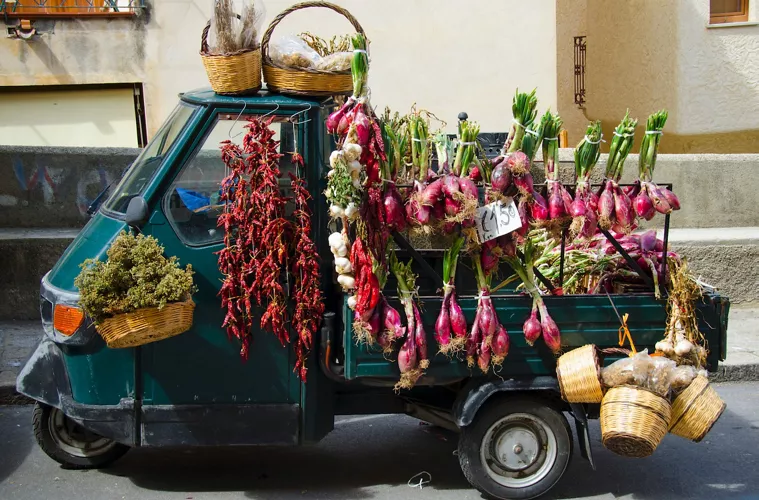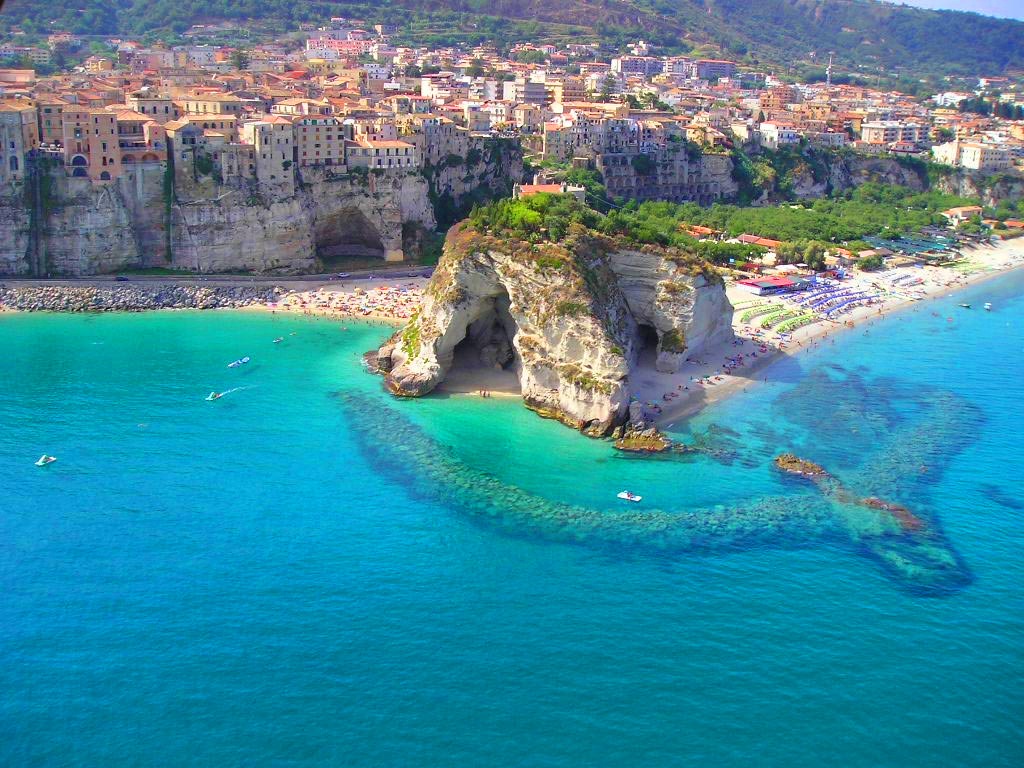Crystal-clear sea, the Riace Bronzes, and a captivating mix of history and beauty
Calabria, also known as the tip of the Italian boot, is a region in Southern Italy characterized by the incredible diversity of its landscapes, with the proximity of mountains to a splendid sea that attracts tourists from all over the world.
The colors of the sea, sandy shores alternating with rocky coastlines, small villages, wild nature, evidence of ancient origins, and the intense flavors of the local cuisine make Calabria a special destination in every season.
1. Origins and historical background on Calabria

The history of Calabria has its origins in distant antiquity, as demonstrated by the Necropolis of Torre Mordillo, a site of great archaeological interest that has yielded important Iron Age artifacts that are now preserved in the Archaeological Museum of Cosenza.
The territory has been inhabited by various ancient peoples: among the first were the Aschenazi, the Ausoni, and the Enotri, the latter of Greek origin who settled in a large territory, Enotria, which included today’s southern Campania, part of Basilicata and Calabria. From the happy mix of cultures belonging to these peoples came the civilization of the Western Greeks, which went down in history as Magna Graecia.
After the decline of the Oenotrians, the Bruzi arrived, settling in what is now Calabria, which was made up of a confederation of cities. The Bruzi were allies of Hannibal but had to cede their territory to the Romans following Hannibal’s defeat in the Pyrrhic War.
The great works of infrastructure date back to the golden era of the Roman Empire, including the Via Popilia, built by the order of Publius Popilius Lenate to link Reggio to Capua.
With the fall of the Roman Empire, it was the turn of the Byzantines, Normans, and under the Kingdom of Naples, the Angevins and Aragons.
2. The main cities of Calabria

Situated between the Tyrrhenian and Ionian seas, Calabria, the land of sunshine and strong flavors it’s rich in valuable destinations.
Among the most important cities, Reggio Calabria is on the slopes of Aspromonte and opposite the Strait of Messina. Its privileged position allowed it to weave intense trade relations with Sicily.
It has Greek origins, but a modern appearance shaped by the devastating earthquakes that struck it. The city houses the famous Riace Bronzes in the Archaeological Museum of Reggio Calabria.
Crotone is one of the newest provinces. Facing the Ionian coast, it was a fundamental cultural and trade center in the times of Magna Graecia. To this day, it remains the most industrialized center in the region. Here is Capo Colonna, one of Calabria’s most famous archaeological sites.
Cosenza, a city in the center of one of the most fertile valleys in the area that has made it an important agricultural area, is also full of charm. Founded as the capital of the ancient population of the Bruzi, it still retains a medieval appearance in the oldest part of the hill. Cosenza Cathedral is an interesting stop: in full Romanesque style, it towers over the city’s historic center.
Of great importance for the region is also Catanzaro located on a hill ridge. Founded by the Byzantines in an elevated position for defensive reasons, it was isolated for a long time in the course of history, but in the 20th century, it developed by expanding towards the sea.
Nature lovers will be enchanted by the Catanzaro Biodiversity Park dedicated to the flora and fauna of the Mediterranean area.
3. What to see in Calabria: 4 unmissable destinations

In addition to its most important cities, Calabria offers numerous points of interest such as Capo Vaticano, between Pizzo Calabro and Nicotera, 7 kilometers of crystal-clear waters, with picture-postcard views of smooth tufa cliffs, sheer cliffs, and coves with crystal-clear sandy bottoms.
The Island of Capo Rizzuto is located on a promontory in the heart of the Capo Rizzuto marine area, the largest protected area in Europe, and contains interesting archaeological sites and unspoiled beaches. Sea lovers cannot help but sunbathe on the beaches of Tropea, a corner of paradise with white sand and crystal-clear sea.
Among the most beautiful in the region is the characteristic Arcomagno Beach in San Nicola Arcella: it is a small lagoon consisting of small pebbles and gravel and owes its name to the large rock arch that protects it from the sea.
4. The unusual places of Calabria: 2 destinations for the curious

In the beautiful Riviera dei Cedri, a jewel in the Calabrian landscape, stands the Isle of Dino, the scene of many historical battles and used to sight pirate ships. It inherited its name from the ancient Greek word “dina”, meaning storm.
Also not to be missed is Pentedattilo, a mysterious ancient village of the “five fingers”, so called because it takes its name from the shape of the cliff of Mount Calvary, shaped like a giant hand. Long abandoned, it has become one of Italy’s most atmospheric ghost spots.
5. The typical products of Calabria: 4 delicacies to savor

Calabrian cuisine is very rich: among the products of the local culinary tradition that you absolutely must try is the nduja di Spilinga, a soft and spicy spreadable salami ideal on bread, pizza, and in sauces.
Cured meat lovers will also appreciate Calabrian soppressata, a sausage made from lean meat and pork fat, to which chili pepper and wild fennel are often added.
Among the cheeses is the caciocavallo Silano, of ancient origin and made from fresh whole milk.
One of the typical Calabrian products that symbolize the region is the red onion of Tropea PGI, which is sweeter due to the particular climatic and geographical conditions in which it grows.
6. Events in Calabria: an opportunity not to be missed

One of the most beautiful traditions is the one held every year on 29 August in Taurianova: U ‘mbitu is the bonfire held in honor of the town’s patron saint, Our Lady of the Mountain, in which dried lupine stalks, “i luppinazzi”, are burnt.

